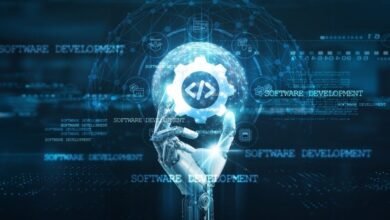تدريب مبتكر: كيف تجعل التعلم ممتعًا من خلال الألعاب!

تحويل التدريب من خلال استخدام الألعاب في تطوير المحتوى
التعلم يوسع من معرفة الفرد بموضوع معين أو عدة مواضيع لفهم أفضل. منذ بداية التدريب والتعلم، تم تطوير العديد من الأدوات لتسهيل الاحتفاظ بالمعرفة، وتحفيز الدافع، وإضفاء بعض المرح على العملية. لطالما ارتبط التدريب بدلالات سلبية مثل الرتابة والملل والتفاعلات القسرية؛ وهنا يأتي دور استخدام الألعاب. فما هو مفهوم استخدام الألعاب؟
ببساطة، إن استخدام الألعاب هو تطبيق آليات اللعبة أو عناصر تصميم لعبة تفاعلية لإظهار السلوكيات المرغوبة ونتائج التعلم. يستفيد هذا المفهوم من الميل الطبيعي لدى البشر للتنافس والإنجاز والمكافأة اللاحقة لدفعهم إلى الأمام. لقد استوعبت التدريبات عبر الإنترنت مفهوم استخدام الألعاب كجزء من استراتيجيتها لتدريب الموظفين. وقد كان ذلك نقطة تحول حيث يحاكي الحاجة الفطرية لتحفيز وإشراك المتعلمين من خلال نهج ديناميكي.
ما الفرق بين استخدام الألعاب والتعلم القائم على اللعبة؟
يستخدم التعلم القائم على اللعبة عناصر اللعبة لتعليم المتعلمين مهارة معينة أو لتحقيق نتائج تعلم محددة باستخدام المحتوى والأهداف الأساسية لجعل الدورة بأكملها ممتعة. بينما يعتبر استخدام الألعاب طريقة لتطبيق العناصر في سياق غير ألعاب يعزز السلوك المرغوب ويحفز نتائج التعلم. الفرق الآخر بين المفهومين هو دمج آليات اللعبة مع محتوى التعلم؛ حيث يدمج الأول بين الاثنين، بينما يستخدم الثاني عناصر اللعبة كمكافأة لإكمال وحدة أو مهمة.
وفقًا لأبحاث Markets and Markets، يُتوقع أن ينمو سوق الاستخدام العالمي للألعاب من 9.1 مليار دولار في عام 2020 إلى 30.7 مليار دولار بحلول نهاية عام 2025 بمعدل نمو سنوي مركب يبلغ 27.4%.
علم النفس وراء استخدام الألعاب
لطالما جذبتنا الألعاب بشكل لا مثيل له وتستمر في كونها أدوات قوية في تطوير المحتوى لتدريب القوى العاملة. لماذا؟ لأن جوهر مفهوم الاستخدام يتضمن القدرة على تحفيز الدوبامين، وهو ناقل عصبي يتم إنتاجه في الدماغ البشري ويرتبط بالمتعة والمكافأة عند إتمام مجموعة معينة من التعليمات.
عندما يكسب المتعلمون نقاطًا أو يفتحون شارات أو يتسلقون قائمة المتصدرين، يمكنهم تجربة شعور بالإنجاز والرضا مما يعزز السلوك الإيجابي ويحفزهم بدافع داخلي للمشاركة مع المحتوى لتحقيق التمكن والاستقلالية والغرض الواضح لديهم. ومن خلال توفير أهداف واضحة وتعليقات فورية وإحساس بالتقدم، يمكن لعناصر الاستخدام أن تشجع المتعلمين على الاستثمار في إكمال عملية التدريب.
فوائد استخدام الألعاب في تدريب الشركات
تعمل الشركات على تعزيز أداء الموظفين واحتفاظ المعرفة والدافع لديهم بينما تخلق بيئة تعليمية أكثر جذبًا.
1. تعزيز مشاركة الموظفين
2. تحسين احتفاظ المعرفة
3 . تلبي احتياجات متنوعة للتعلم
< p > تحتوي القوى العاملة علي أشخاص متنوعين ذوي مهارات وأنماط وسرعات تعلم مختلفة ، ويوفر لهم مفهوم الاستخدام المرونة اللازمة ، مما يسمح للموظفين بالتعلم وتطوير المهارات بطريقة تناسبهم بشكل أفضل . فعلى سبيل المثال ، بالنسبة للموظفين الذين يسعون للحصول علي أدوار قيادية ، يمكن لقوائم المتصدرين أن تعزز دافعهم للتفوق أثناء التدريب ، بينما يمكن للموظف الذي يشغل دوراً إدارياً الانخراط فى الأنشطة الجماعية لضمان التعاون السلس داخل فريقه . < h4 > 4 . تنمية المهارات الحيوية
< p > يمكن لمفهوم الاستخدام مساعدة الموظفين علي تطوير مجموعة واسعة من المهارات بما فيها التفكير النقدي وحل المشكلات والتعاون والتواصل وذلك عبر ألعاب متعددة اللاعبين مثل بناء الهياكل وحل الألغاز وإكمال المهمات التي تتطلب العمل الجماعي والاستراتيجية وتشجع الفرق المختلفة للعمل سوياً والتفكير النقدي لتحقيق الأهداف المشتركة .
< h3 > تنفيذ عناصر اللعب فى التعليم الإلكتروني
< p > تعمل الشهادات كجوائز رقمية لإنجاز مهام محددة أو الوصول إلى مراحل معينة مما يوفر إحساساً ملموساً بالإنجاز ويحافظ علي حماس الطلاب لإكمال الوحدات الدراسية او عرض المهارات الخاصة بهم .
< p > تقدم قوائم التصنيف عنصر المنافسة حيث تعرض أفضل الأداء داخل مجتمع التعليم وعبر عرض النقاط او التصنيفات يتم تحفيز الطلاب لتحسين أدائهم وتسلق القائمة للمنافسة الصحية .
< p > تعتبر القوة الإضافية مزايا مؤقتة مثل الوقت الإضافي للاختبارات والإشارات والنقاط الإضافية لإنهاء المهام بسرعة وهذه المزايا تبقي الطلاب متحمسين حول المحتوي وتتقدم بكفاءة أكبر .
< p > تسمح الصور الرمزية للمتعلمين بتخصيص وجودهم الرقمي مما يخلق إحساساً بالملكية والهوية ويمكن أن تعكس الصور الرمزية القابلة للتخصيص التقدم مثل السمات التي تتطور عبر المستويات المختلفة .
< P>This is a structured learning journey for all types of employee roles, from beginner level to advanced level, as they complete tasks or accumulate points.< / P >
< P>This clear hierarchy helps break down large learning goals into manageable achievements.< / P >
< P>The story quests weave a narrative around the learning content and guide the learners through a storyline where they can complete specific tasks or challenges to progress.< / P >
< P>This is particularly effective for skill-building or scenario-based training.< / P >
< H5>Missions are goal-oriented tasks that learners must accomplish to unlock rewards or move to the next stage.< / H5 >
< H5>This encourages critical thinking and problem solving, making learning active and purposeful.< / H5 >
< H6>The time-bound challenges introduce a sense of urgency, encouraging learners to stay focused and act quickly with countdown timers to test their ability under pressure.
< H6>The mini-games break down complex topics into engaging bite-sized experiences that simulate puzzles, matching games, or simulations tailored to make it more interactive.
< h2 >< b >< u >< i >< strong >< em>< span style="color: #ff0000;">Applications Of Gamification Training And Learning
Businesses are transforming the way organizations approach Learning and Development by integrating game-based elements for more engaging experiences.
Corporate Training
Gamification has become a cornerstone of corporate training,
making mundane topics like compliance,
leadership,
skills development more engaging.
By fundamentally changing traditionally created modules,
gamified learning modules can motivate employees
actively participate in necessary training programs sharpen their needed skills.
For example,
in compliance training scenario-based modules help employees navigate ethical dilemmas safety hazards earn points badges correct actions.
In leadership development through virtual simulations employees take on leadership roles solve real-world challenges conflict resolution team management.
In sales customer service training missions power-ups used by employees simulate environment complex cases resolved empathetic effective solutions avatars represent customer profiles personalize interaction training safety compliance manufacturing sector time-bound interactivity helps identify workplace hazards simulated factory setting levels contain progressively complex safety scenarios.
Professional Certification Programs
Several organizations now offering complex certification programs employees upskill reskill line work gamification simplifies process breaking content smaller manageable modules incentivizing progress quizzes skill-based challenges scenario-based simulations improve knowledge retention prepare real-world applications certification some courses project management certifications IT cybersecurity certifications financial services certifications human resources certifications more.
Onboarding Programs
Employee onboarding across all roles verticals cannot same new hires often feel overwhelmed sheer amount information need aboard gamified onboarding programs new hires undergo immersive enjoyable experience company policies values workflows interactive games scavenger hunts point systems elements help integrate faster build sense connection.
By applying gamification areas enhance outcomes foster immersive environment continuous development engagement ensuring workforce better prepared curveballs present future.
Future Trends Integration AR/VR Immersive Gamified Learning Augmented Reality Virtual Reality revolutionizing creating deeply immersive environment AR overlay digital elements real-world settings solve challenges explore systems interactively VR transports fully virtual worlds practice skills perform tasks complete missions lifelike simulations AI Machine Learning Adaptive Gamification paving way adaptive personalized gaming experiences technologies analyze behavior preference progress suggest next steps based performance ensures tailored experience maintaining engagement supporting unique path Hybrid Environment As hybrid models prevalent bridging gap between-person online seamless integrate both settings channels instance program include digital missions online followed problem-solving activities physical workshop Final Thoughts harnessing power mechanics transformative force realm Development deliver absorbed infusing traditional methods game-based create inspire achieve whether onboarding compliance professional proven versatile effective strategy diverse contexts right embrace strategic tool impactful engage ever-evolving world



